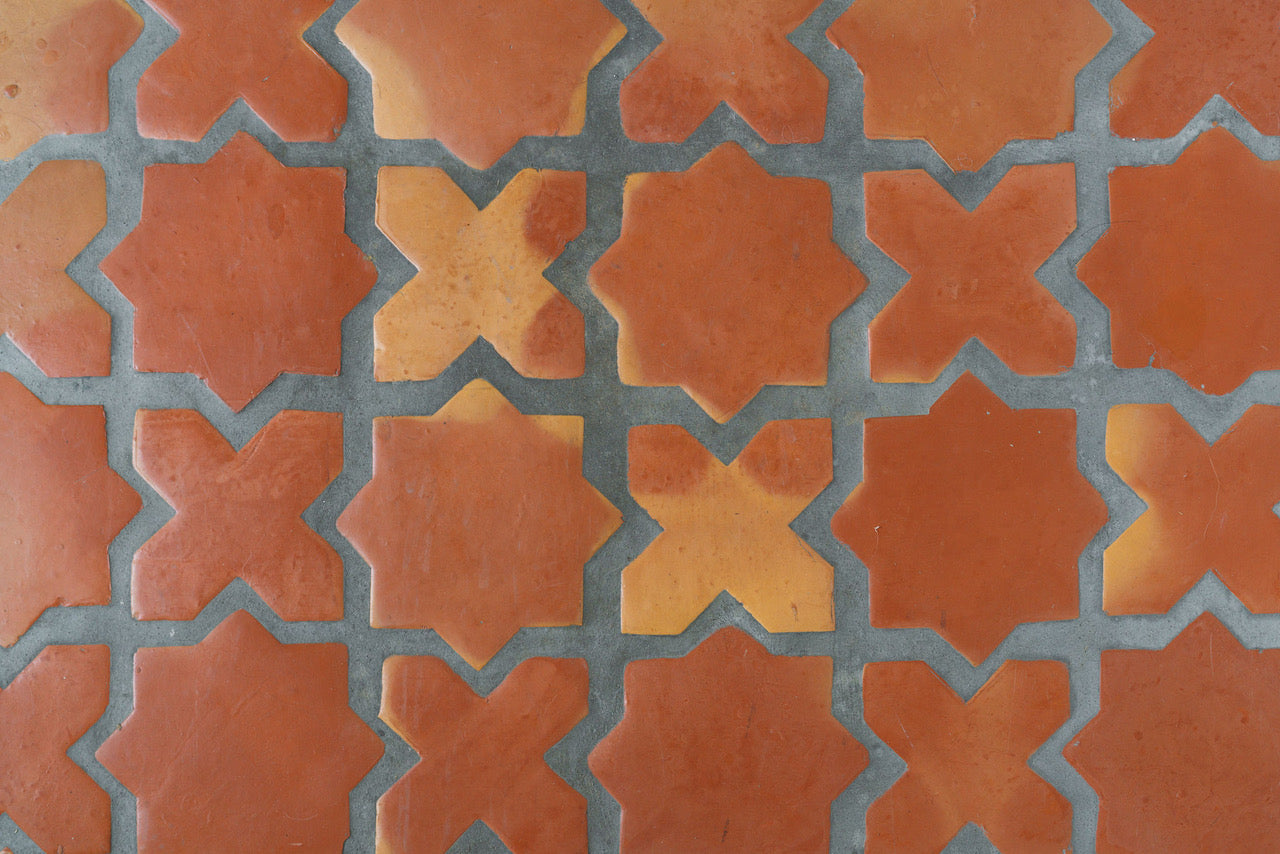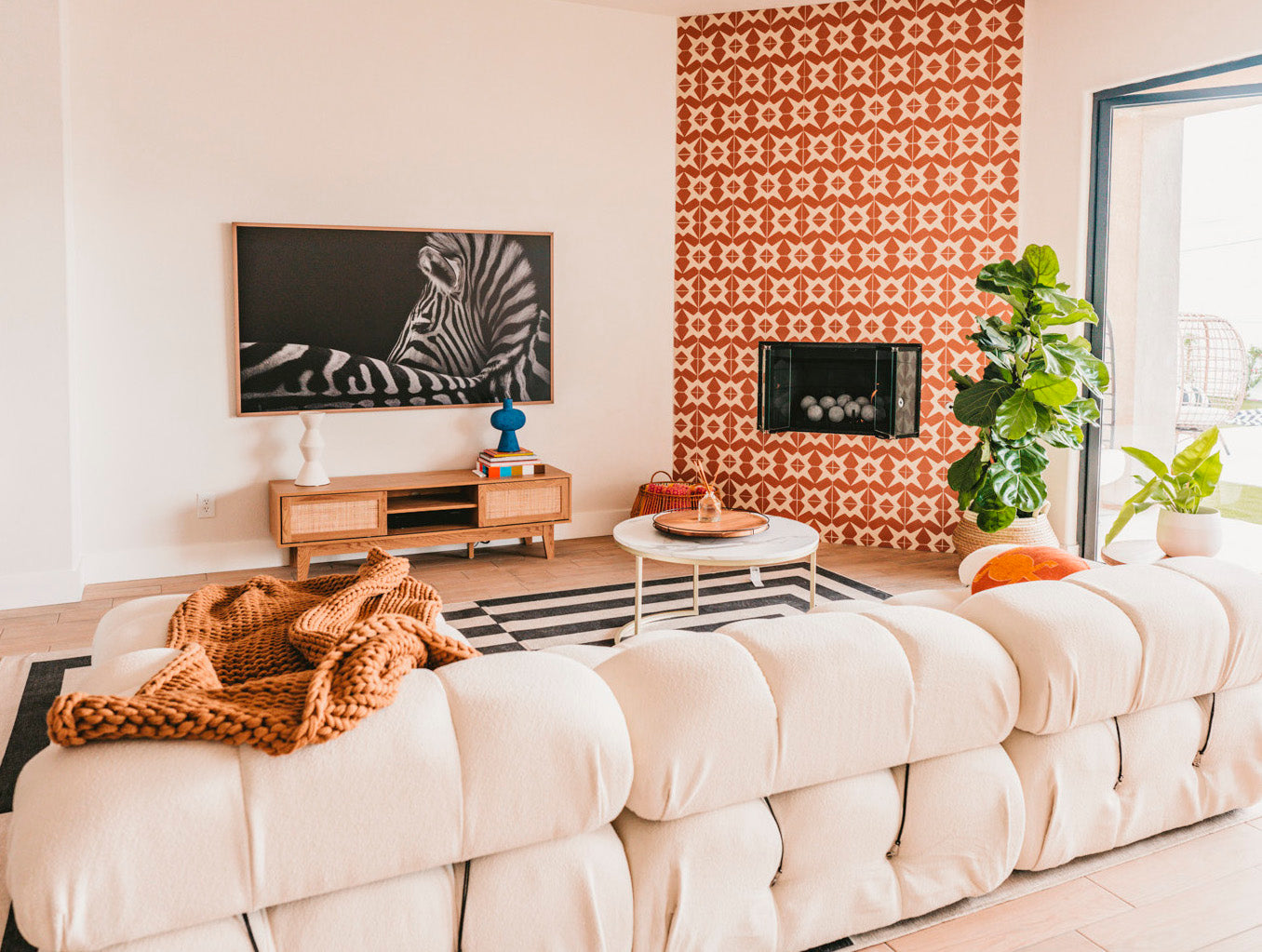Tile projects often come with the challenge of finishing edges cleanly. Traditionally, special trim pieces such as bullnose or metal edging have been used to achieve a polished look. However, many homeowners, designers, and DIY enthusiasts are embracing the "no trim" approach, finding innovative ways to complete tile installations without the added cost or hassle of specialized edging.
Whether you're working on a backsplash, shower, or flooring project, here are some creative ways to finish your tile project beautifully—without trim pieces.
- Mitering Tile Edges
- Field Tile Trim
- Using Schluter Edging
- Creating Caulked or Grouted Edge
- Painting the Tile’s Raw Edge
- Using a Border Tile to Frame the Edges
- Inset or Recessed Tile
- Exposed Edge
- Ledge or Shelf for Transitions
- Wood Trim for a Custom Look
- Aligning Tile with Adjacent Surfaces
- Embracing the "No-Trim" Approach
Mitering Tile Edges
Our personal favorite and one of the most seamless ways to finish tile without using trim is by mitering the edges. This technique requires cutting the tile edges at a 45-degree angle and joining them together for a smooth, seamless transition. Mitering is especially beneficial for outside corners on walls, niches, and shower enclosures. While it does require a bit of precision, the result is a high-end, custom look that eliminates the need for extra trim.
Field Tile Trim
Cutting tiles can be a great tool when you're exploring "no-trim" options. This technique allows you to create a custom transition. It’s particularly useful when working around windows, niches, or when designing a tile border where it meets the wall. By cutting the tiles at a 45-degree angle (just like a miter cut), you can easily turn the field tile into a custom trim piece. While it does take a bit of skill, it's really just about cutting and adhering pieces of the field tile together to create a clean edge. This not only gives a refined finish but also adds a personalized touch to your space.
Using Schluter Edging
Schluter Jolly edge trim is a minimalist alternative to bullnose tiles. If you're looking for a nearly invisible finish, consider using a color-matched or slim-profile edge treatment that blends into your design rather than standing out. Consider a paintable version that can be matched to the wall color, creating a nearly invisible transition.
Creating Caulked or Grouted Edge
Grout and caulk are mostly known for their ability to fill joints, but did you know they can also work as a trim? When it comes to where tile meets drywall or other surfaces, a quick and easy solution is to use caulk or grout. Opting for color-matched caulk helps create a smooth edge that seamlessly blends into the wall or surface around it. This is especially handy for backsplashes, where a simple bead of caulk can give you that polished, water-resistant finish you’re looking for. This grout to trim is the perfect choice for Recycled Clay and Desert Fields tiles.
Painting the Tile’s Raw Edge
Another option is painting the edges of the tiles to create a finished look without additional trim. Using a high-quality, color-matched paint adds a seamless look while protecting the tile edges from wear and moisture. It's a popular choice for spaces like kitchen backsplashes and bathroom walls, making it super easy to coordinate wall colors.
Using a Border Tile to Frame the Edges
One fun idea is to add a contrasting or coordinating border tile to frame the edges of your installation. By choosing a natural material like onyx, marble, or even a stylish pencil trim, glazed clay tile, or even brass or gold trim can give your trim a special touch that reflects your personal style. This approach works wonders for feature walls, shower surrounds, and backsplashes. You can let your creativity shine and find stock trim that beautifully complements your Clay Imports tiles. Plus, a decorative tile along the edge can introduce a unique design element while eliminating the need for traditional trim.
Inset or Recessed Tile
Inset tiles will be recessed, allowing them to sit seamlessly within the surrounding materials, such as drywall. The subtle, or non-existent, difference in thickness between the inset tiles and the adjacent surface results in a smooth, flat appearance without the need for trim tiles. This installation method is most effective during a complete renovation, where you can properly accommodate the recessed design, or when a textured finish is applied to the wall, allowing it to build up to the same level as the tiles.
Exposed Edge
By leaving the edges of the tile exposed, you can enhance the natural look of the space and opt for a simple trim solution. The decision ultimately depends on the aesthetic you desire. This approach is not only straightforward but also ideal for quick fixes or to maintain a natural appearance.
Integrating a Ledge or Shelf for Transitions
In spaces like shower entries and niches, why not consider adding a built-in ledge or shelf? It can create a natural transition point, and you won’t even need to fuss with trim! Imagine a granite, quartz, or honed marble slab as a finishing edge on a tiled bench, window sill, or shower curb—it's not just stylish, but also super functional.
Incorporating Wood Trim for a Custom Look
Another great option to consider is using wood trims, like thin quarter round or squared wood trim, to create a stylish edge. This is ideal for wainscoting, windows, or adding a touch of warmth and organic materials to your tile installation. Also great for flooring transitions! Whether you choose stained or painted wood trim, it can complement your overall design and give a polished, finished look without the need for specialized tile edging. Plus, it can be a budget-friendly choice!
Aligning Tile with Adjacent Surfaces
When you plan your tile layout to align perfectly with nearby materials like cabinetry or countertops, you can achieve a seamless transition. Just keep in mind that a bit of careful planning goes a long way to ensure everything looks great together!
Embracing the "No-Trim" Approach
Trying out the "no trim" approach in your tile projects can be a way to save some money while also letting your creativity shine. Whether you’re open to mitered edges, Schluter, or caulked transitions, there are so many ways to achieve a beautiful and professional finish without the need for traditional trim pieces. By picking the right tile and planning your layout carefully, you can create a stylish, modern look that will last for years to come.
We’d love to hear about your favorite ways to finish tile without trim! Feel free to share your experiences in the comments below!




 Share
Share
 Pin it
Pin it















